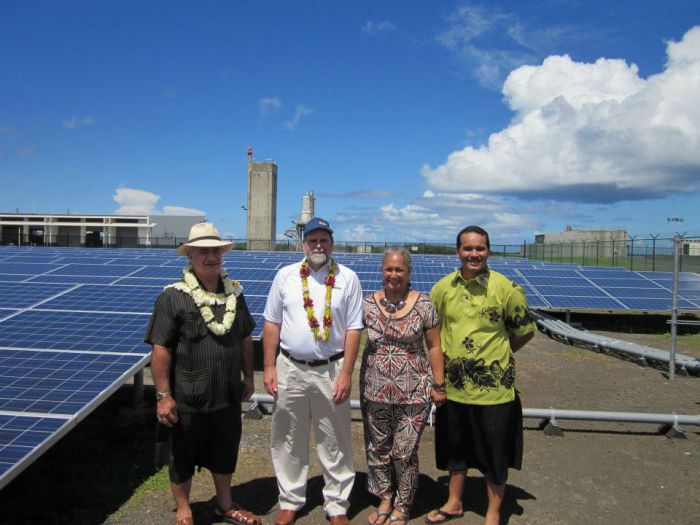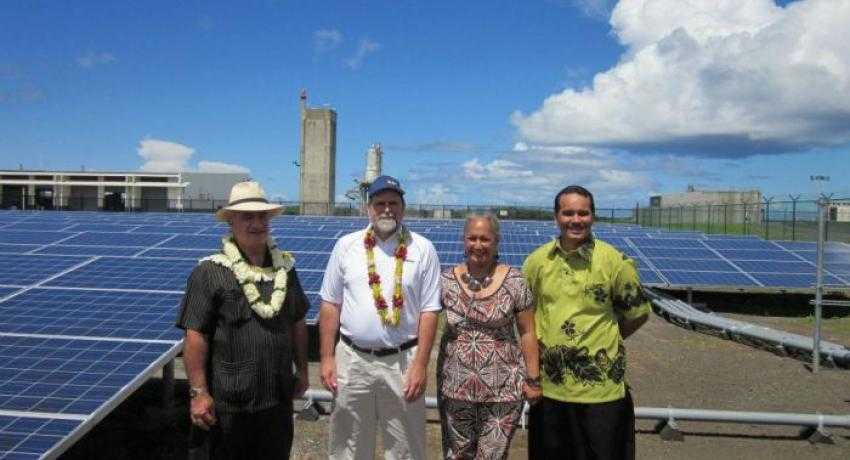Independent Samoa gets more independent with solar
 The Independent State of Samoa, a small island nation in the Pacific, is going solar to help make sure it’s roughly 200,000 citizens have access to cheaper power. That’s thanks to a 546 kilowatt project being developed by SunWize Technologies, and financed by Japan’s Pacific Environment Community (PEC) Fund. The project will help reduce the nation’s dependence on expensive, fossil fuel based diesel generation.
The Independent State of Samoa, a small island nation in the Pacific, is going solar to help make sure it’s roughly 200,000 citizens have access to cheaper power. That’s thanks to a 546 kilowatt project being developed by SunWize Technologies, and financed by Japan’s Pacific Environment Community (PEC) Fund. The project will help reduce the nation’s dependence on expensive, fossil fuel based diesel generation.
“Currently, diesel power plants generate approximately 60 percent of Samoa’s electricity, making the country dependent upon imported fossil fuels,” said Rapa Young, solar project team leader for Samoan power utility Electric Power Corporation (EPC). “As a result, fluctuating global oil prices have a tremendous effect on electricity tariffs. We believe our investment in this renewable solar energy project will allow us to reduce Samoa’s dependency on fossil fuels and provide its citizens with a more reliable, stable and affordable supply of electricity.”
The project will consist of multiple arrays across the Samoan islands of Savai’i and Upolu. On Savai’i SunWize will install a ground array in the Salelologa community. On Upolo, it will install a ground array in the Tanugamanono community, and Vaitele will have a ground array as well as a solar canopy on an EPC equipment storage building.
“This new solar installation will help Samoa take a major step toward improving its energy efficiency while also helping us develop greater skills and capacity in the growing renewable energy field,” Young added. “We’re excited to see this project come to fruition and provide positive environmental and financial benefits for both current and future generations of Samoans.”
Since Samoa’s a tiny island in the South Pacific, the installations will face certain challenges that most conventional PV arrays don’t have to deal with, like 124-mile-per-hour typhoon-force winds and corrosive ocean air, like installations in hurricane-prone parts of Florida. But SunWize already has experience with building similar systems.
“SunWize successfully installed a 1.8 MW system at the airport in neighboring American Samoa in 2012 as well as a smaller system at the VA Hospital in Pago Pago,” said David Eveland, vice president of sales for SunWize’s Sustainable Energy Group. “The experience and information we gained during these particular installations will be invaluable as we launch this new project in another tropical, island environment.”
The company said it will rely on the previous engineering and design experience gleened from building out the other projects, which included being able to withstand high wind loads and implementing an extensive corrosion control plan. The plan will dictate the appropriate galvanization methods for all parts of the installations, including solar module frame mounting and grounding. “The plan will limit the system’s potential for corrosion, extending its life to an estimated 25 years,” SunWize said.




